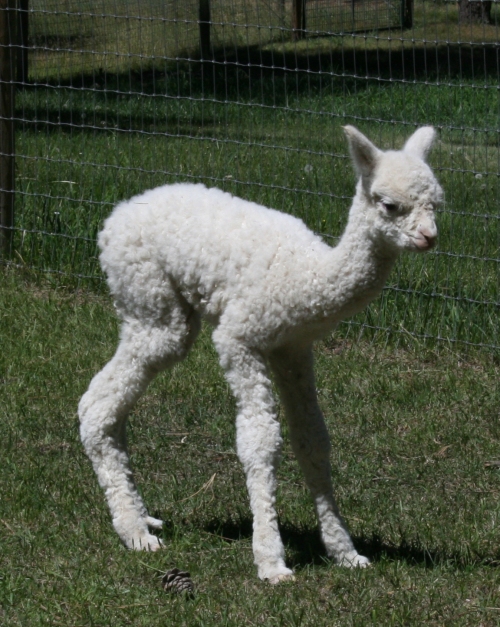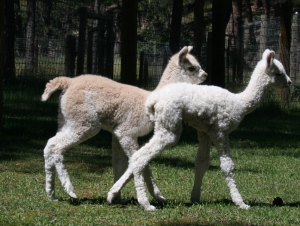Colostrum is a lot like insurance. If you’re lucky, you’ll never need it. Because if you’re not, a much dreaded scenario has happened. So I happily buy it, only to toss it away expired, buy it again, and restock.
So what is it and why so critical? Alpaca babies are born immuno-naked. That means they did not absorb any immunities from the dam in utero. During the first day post partum, the dam’s first milk is called colostrum. It’s thick and viscous and packed with immunoglobins and nutrients to build up the newborn’s immunities until it can develop its own. Crias who do not get this are most often candidates for an immediate plasma transfer, depending on the results of the IgG test (which you should always get in non-normal births). At this time, there is no alpaca-derived colostrum you can buy; therefore, purchased colostrums are either sourced from goats or cattle.
But back to exactly how you can acquire colostrum to have on hand. There are quite a few ways and, I’m sure, many more than I can put down here.
1. Stillborn Death: In the saddest example of turning something tragic into something useful, a still born baby is an opportunity to milk out the grieving dam and freeze the colostrum for future use.
2. Artificial Colostrum: This is a method taught during Roni Spresser’s Photonic Therapy course. Intriguing but kind of gross (the method, not the course which is very worth taking). Remove half a bottle of blood from an animal from your herd (or have the vet do it with one of your geldings or non breeders). Lay the stoppered bottle on its side at an incline and let it clot, making sure the lid is not touched by the blood. Stand upright in the fridge for two days. The clot contracts and squeezes out pure serum (with antibodies). Decant serum into an ice block tray and freeze. Dissolve a couple of blocks in a pint of goat’s milk as needed to feed the newborn cria.
3. Frozen Goat Colostrum: Support your local goat breeder! They are often happy to sell you colostrum frozen in cubes in an ice tray. It can be pricey- I’ve purchased it at $2/cube. You can store this up to two year, preferably in a frost-free freezer. Make sure the goat breeder has your vet’s approval for maintaining a disease-free herd.
4. Frozen Cattle Colostrum: Useful-Items.com sells a frozen cattle colostrum that is shipped overnight. They recommend two bottles for an alpaca cria. One bottle costs $14.
4. Powdered Colostrum: Also available from Useful-Items.com is a powdered cattle colostrum that has been customized for alpacas. Manufactured by La Belle, the biggest advantage of the Premier Select Alpaca Supplement is a long shelf life. It’s $19.95 when purchased directly from La Belle.
There is some debate as to the efficacy of substitutes for alpaca colostrum. From personal experience, none of these substitutes have passed on immunoglobins in sufficient quantities to protect the cria ( which would be an IgG greater than 800). But I still keep colostrum in some form on hand. It can’t hurt and even if it helps a little, I’m game. For anyone who’s been there, struggling hour by hour to keep a delicate new cria going, you know just how far and how much you’d do to tilt the odds toward a happy ending.





